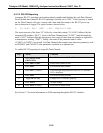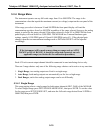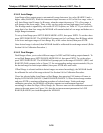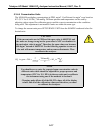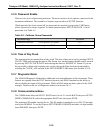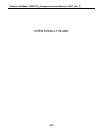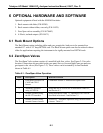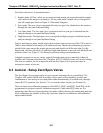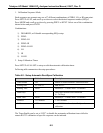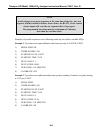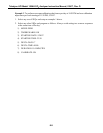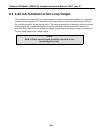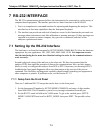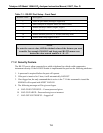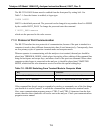
Teledyne API Model 100AH SO
2
Analyzer Instruction Manual, 02417, Rev. D
Zero/Span valves have 4 operational states:
1. Sample mode. All four valves are not energized and sample gas passes through the sample
valve and into the analyzer for analysis. For any other mode, sample valve is energized to
shut off sample port. Refer to Figure 9-3 Pneumatic Diagram.
2. Zero mode. The zero valve is energized allowing zero gas to be admitted into the analyzer
through the rear panel bulkhead fitting.
3. Low Span mode. The low span valve is energized and low span gas is admitted into the
analyzer through a rear panel bulkhead fitting.
4. High Span mode. The high span valve is energized and high span gas is admitted into the
analyzer through a rear panel bulkhead fitting.
Zero air and span gas inlets should supply their respective gases in excess of the 700 cc/min (i.e.
1000 cc/min) demand of the analyzer at ambient pressure. Ideally the calibration gas pressure
should be the same one as the sample gas pressure and should not differ more than 2 in-Hg.
Supply and vent lines should be of sufficient length and diameter to prevent back diffusion and
pressure effects. See Figure 2-3 for fitting location and tubing recommendations.
Adequate inexpensive zero air can be supplied from the room air by connecting a charcoal
scrubber and 5 micron particulate filter (Teledyne API P/N 000369) to the zero air inlet tubing.
The zero air scrubber used in conjunction with the Zero/Span Valve option provides an
inexpensive source of zero air.
6.3 Autocal - Setup Zero/Span Valves
The Zero/Span valves system can be set up to operate automatically on a timed basis. The
Teledyne API model 100AH with Zero/Span valves option offers capability to check any
combination of zero and up to two span points either automatically on a timed basis, through
remote RS-232 operation (see Section 7.5), or external contact closure (see Section 8.5).
There are three auto-calibration sequences called SEQ1, SEQ2, and SEQ3. Each SEQ can be
programmed to perform a specific calibration sequence. Under each SEQ, there are five
parameters that affect zero/span checking: the mode enable/selection, the starting date and time
of the calibration, the number of delay days and time, duration of calibration, and calibration
adjust enable/disable.
6-2



